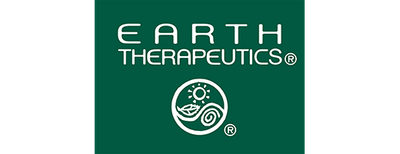This Lunar New Year kicks off the Year of the Rabbit, one of twelve animals in the Chinese Zodiac. Fourth animal in the cycle, the Rabbit exemplifies grace, compassion, and good luck. It is also said to be a year of diplomacy and a time for harmony and peaceful resolutions.

As a human with access to the internet, keeping up with current events, this is absolutely most welcome news.
This year of the Rabbit is associated with the element of Water, which symbolizes creativity, wisdom, intelligence, and transformation. It’s a time of growth and flexibility in the face of change. Water is also a symbol of fertility, as are rabbits, which bodes well for creativity and beginning new projects. It’s also a lovely reminder that the future isn’t set in stone – it’s full of possibilities, good ones, even!

As a symbol of peace, good luck, and mindful living, the Water Rabbit reminds us to handle ourselves and our relationships with others with grace and compassion. With some Rabbit’s luck, we can look forward to a year that brings more joy, contentment, and stability to our lives.
Beyond the Bunny: Korean Lunar New Year
Lunar New Year is probably the biggest holiday celebrated in Korea, alongside autumn’s Chuseok — and both are deeply connected to commemorating ancestors.
This year, Lunar New Year kicks off on Sunday, January 22 so we thought it would be a great opportunity to sit down with Julia Kang-Reeves, who heads up marketing for Earth Therapeutics. As a first generation Korean-American, we talked about how she and her family keep and evolve holiday traditions from Korea.
Can you share some traditions, how you celebrated growing up versus today?
As a Korean-American kid growing up in the suburbs, I still remember very vividly celebrating the lunar New Year with my family. Having immigrated when I was four, I had lost my connection to my relatives and my culture. We were all busy trying to assimilate so the ritual felt so foreign and yet profoundly resonant and touched me in a seismic way. There is no analogous custom of ancestral worship in the US, so I’ve held onto this as my only opportunity to reconnect to my roots and remember those who came before me, making my life possible.

Traditionally, cooking for Lunar New Year could take days. It’s focused on a ritual called Jesa, where many prepared dishes are placed on a table in front of photos of your ancestors in commemoration of them. We no longer participate in Jesa, because of practical constraints, but we practice sebae, where we visit our parents’ home and bow deeply to them in respect with words wishing them prosperity for the new year. In return they present red envelopes of money. Then we share a large elaborate Korean meal together. The traditional New Year food is dumpling and rice cake soup, tteokguk, which is symbolic of good fortune and new beginnings.
What do you enjoy most about celebrating the Lunar New Year?
The Lunar New Year has a lot of value and significance to me because as an immigrant, it’s the one time a year to remember grandparents and great-parents whom I’d heard a lot about but never met. It makes me pause, remember, and respect – and in turn remember myself and my roots.
I like the idea of Lunar New Year because it emphasizes the moon, the yin aspect of life, family and culture. It’s a good balance to the western world’s solar year, based on the Gregorian calendar, which is more focused on the sun, yang and the individual, creative self. It’s nice to first celebrate the New Year on January 1 – and again later in the month. Each has a different, almost opposite flavor.
I hope that we as first generation Korean-Americans will be able to carry on the traditions of my parents, though honestly, I don’t know how I’d feel about my daughter bowing to me and my husband. (Though I’m sure she’d love the red envelope of money. :)) I think it will evolve to what feels right for us as culture-straddlers, taking on what works and leaving behind what no longer does.

